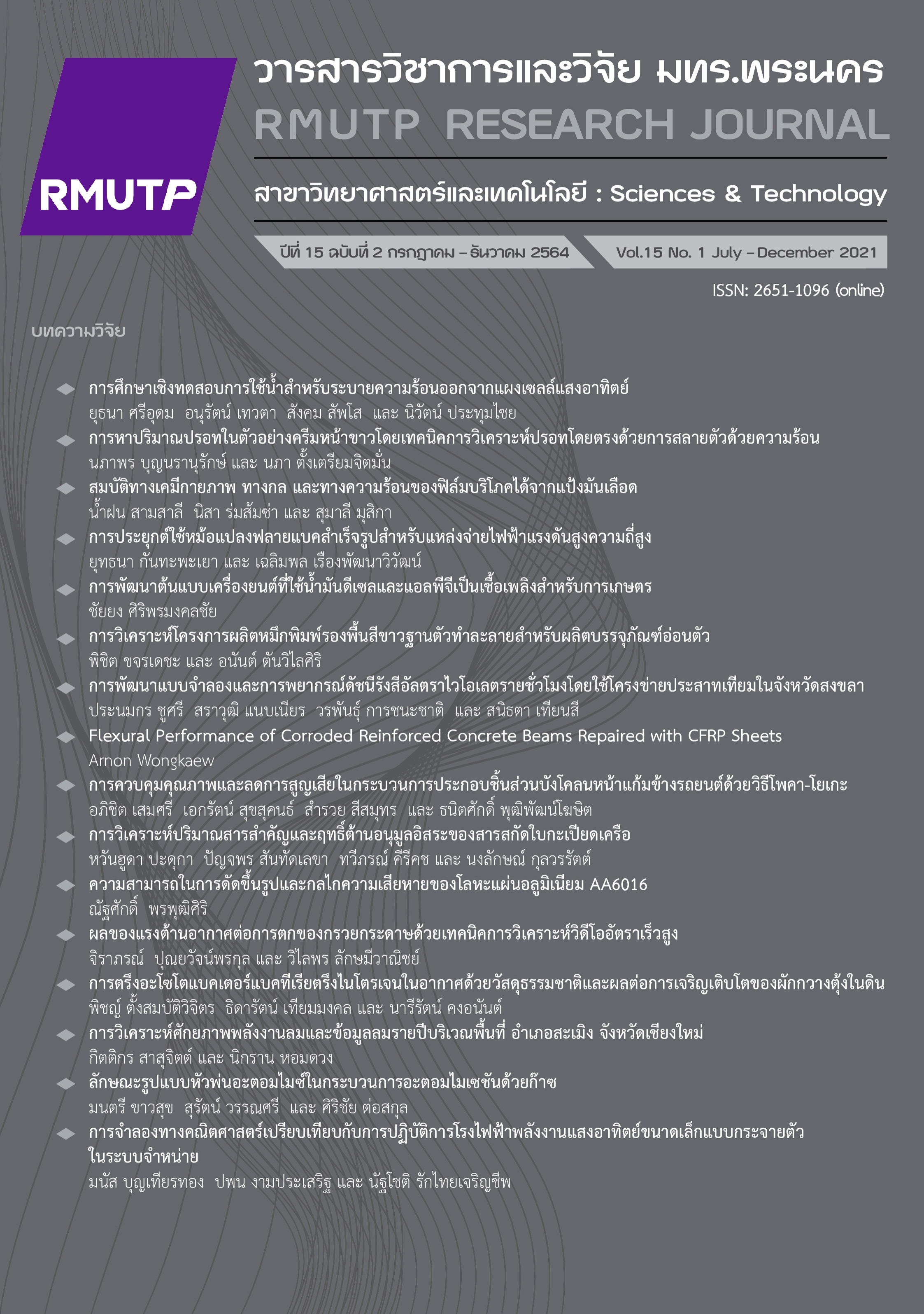Effect of Dragging Force on Paper Cone Falling Using High-Speed Video Analysis Technique
Main Article Content
Abstract
This research was aimed to study of the effect of dragging force on paper cone falling by using the high-speed video analysis technique. Four different sizes of paper cones, ranged from 3.00-5.70 centimeter were used. The cones, having the same mass of 12 g and falling from 2.50 meters height, were recorded for 240 frames per second and then were analyzed using the Tracker Video Analysis software. The results showed that (1) all four different sizes of paper cones were not freely fall with the Earth's gravity, due to indirect proportion with time of theirs speeds. The terminal speed of two large cones having diameter of 5.00 and 5.70 centimeters were 4.42±0.03 and 3.97±0.04 meters per second, respectively. Only 0.87% of these experimental values were different from the theoretical ones. (2) The theoretical trajectory of these cones falling, using the terminal speed from the experimental, agrees with the theoretical ones. (3) The experimental drag force showed a second order function of the paper cone’s speed. The evaluated drag force, during terminal area, is approximately equal to the cone weight. Thus, this technique can help students and teachers to visualize simple physics phenomena and relate them to the physics principles learnt in the classroom.
Article Details

This work is licensed under a Creative Commons Attribution-NonCommercial-NoDerivatives 4.0 International License.
ลิขสิทธ์ ของมหาวิทยาลัยเทคโนโลยีราชมงคลพระนครReferences
C. A. Jara, F. A. Candelas, S. T. Puente and F. Torres, “Hands-on experiences of undergraduate students in Automatics and Robotics using a virtual and remote laboratory,” Computers & Education, vol. 57, no. 4, pp. 2451-2461, 2011.
N. Hırça, “The influence of hands on Physics experiments on scientific process skills according to prospective teachers’ experiences,” European Journal of Physics Education, vol. 4, no. 1, pp. 1-9, 2013.
A. Mooldijk, T. V. D. Valk and J. Wooning, “Top angle and the maximum speed of falling cones,” Science education international, vol. 17, no. 3, pp. 161-169, 2006.
Y. J. Chiu and F. Y. Chen, “Students’ misunderstanding of Galileo’s experiment on the leaning tower of Pisa,” in Proceeding of The International Conference New Perspectives in Science Education, Italy, 2012. pp. 1-5.
P.Wattanakasiwich and J. Poonyawatpornkul, “High-speed video analysis in Mechanics,” Srinakharinwirot Science Journal, vol. 28, no. 2, pp. 211-232, 2012.
S. Phommarach and P. Wattanakasiwich and I. D. S. Johnston, “Video analysis of rolling cylinders,” Physics Education, vol. 47, no. 2, pp. 189-196, 2012.
L. K. Wee, C. Charles, G. H. Goh, S. Tan and T. L. Lee “Using Tracker as a pedagogical tool for understanding projectile motion,” Physics Education, vol. 47, no. 4, pp. 448-455, 2012.
J. Poonyawatpornkul and P. Wattanakasiwich, “High-speed video analysis of damped harmonic motion,” Physics Education, vol. 48, no. 6, pp. 782-789, 2013.
J. Poonyawatpornkul and V. Luksameevanish, “High speed video technique analysis of an object moving on an inclined plane,” Naresuan University International Journal of Science, vol. 15, no. 2, pp. 16-24, 2018.
G. R. Kneller, “Using quaternions to calculate RMSD,” Journal of Computational Chemistry, vol. 25, no. 16, pp. 1-9, 2004.
A. Ahmad and R. M. Mourya, “Testing and Analysis of Spherical and Aerodynamic Helmet in open Circuit Low Speed Wind Tunnel,” International Journal of Engineering Research and Technology, vol. 9, no. 1, pp. 233-238, 2020.


